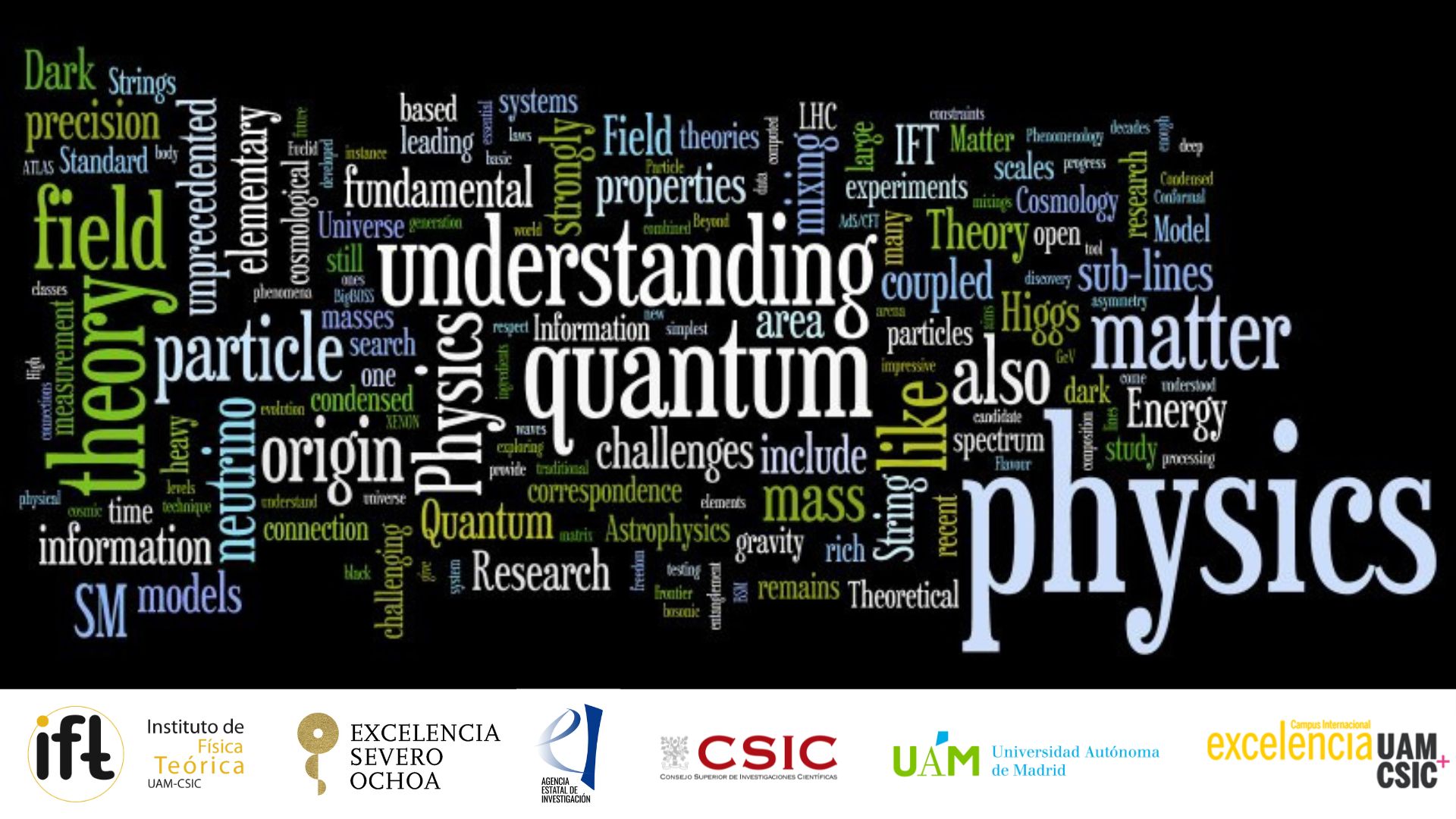Centro de Excelencia Severo Ochoa
Menú
Buscar

Blue Room and Zoom
In this Thesis the phenomenology of the Minimal Linear Sigma Model and of its possible extensions is analysed. This model is a perturbative renormalisable construction where the Higgs arises as a pseudo-Nambu-Goldstone boson from the linearly realised SO(5)/SO(4) breaking. The radial mode, s, of the field that spontaneously breaks the global symmetry is an EW singlet that mixes with the Higgs and plays a crucial role in major part of the discussion. When this scalar mediates the decays of the lightest vector-like quarks of the model, it can lead to novel phenomena different to what experimental searches typically considered. Several present LHC searches can be sensitive to these new signatures. In the context of a CP violating version of the Minimal Linear Sigma Model, the validity of conclusions based on the Effective Field Theory approach with such a field s in the spectrum is also examined. To this end, bounds from the electron Electric Dipole Moment on the resulting effective SM top Yukawa couplings are analysed. Likewise, it is discussed the possibility of a first order Electroweak Phase Transition compatible with the observed Baryon Asymmetry of the Universe when s is present in the scalar sector. Finally, in the context of the Axion-Minimal Linear Sigma Model, axion-like particle realisations are identified where the usual fine-tuning problem of axion models is avoided. In addition, a study about the possible signatures of these realisations at flavour factories and colliders is performed.
Social media